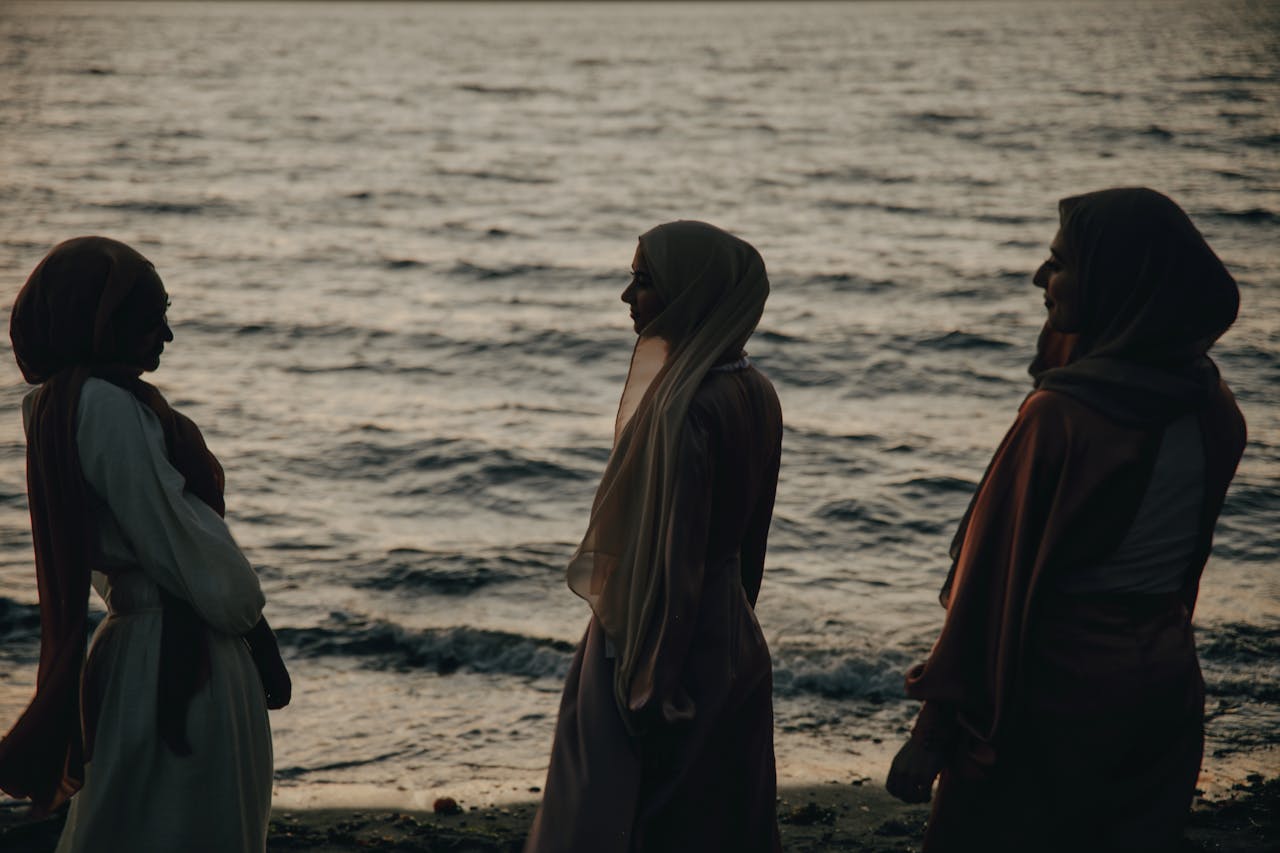Islam is a religion that cultivates modesty in all its followers. Specific guidelines in the Quran and Sunnah describe the dress code for both genders. These guidelines help foster modesty in clothing and assist in living according to Allah’s pleasure. The main aim of these guidelines is to ensure that each individual’s awrah is hidden. Keeping this in mind, this blog will delve deeper into the concept of awrah, the awrah of both genders, and what the Quran and Sunnah state about it.
What Is Awrah?
‘Awrah’ is an Arabic word, and in Islamic Jurisprudence, it refers to the body parts that shouldn’t be exposed in front of certain people. Exposing the awrah is a sin in Islam, and whoever does so intentionally is a sinner. Looking at someone’s awrah intentionally is also a sin.
The Messenger of Allah (PBUH) stated: “A man should not gaze at another man’s ‘Awrah, and similarly, a woman should not look at another woman’s ‘Awrah.”
The concept of awrah assists in cultivating modesty in society and reminds Muslims of the clothing boundaries that should be enforced no matter what.
Awrah & Modesty
The concept of awrah is much more vast than its literal meaning. Awrah is not just limited to clothes but also extends to how Muslims speak and act. It also applies to how Muslims display their bodies and perform every other task, whether in public or private. Considering this, awrah is a branch of haya that ensures we remain on the right path.
“Haya is a branch of faith.”
Awrah Of A Man
The sunnah describes the awrah of a man as the area between the navel and the knees. As for the navel and knees being awrah themselves, there are several opinions.
Shaykh Ibn ‘Uthaymin (may Allah have mercy on him) said that one opinion is that the knees and navel aren’t part of the awrah and shouldn’t be covered. Another opinion is that they are part of the awrah and should be covered. The opinion of men’s awrah also differs according to the four schools of thought.
Maliki, Shafi’i And Hanbali
The opinion of Maliki, Shafi’i, and Hanbali schools is that the knees and awrah are not part of a man’s awrah, and their opinion is based on the following hadith.
“While I was sitting with the Prophet, Abu Bakr approached, lifting the hem of his garment and revealing his knee. The Prophet (PBUH) remarked, “It seems your companion has had a dispute.”
Ibn Jarhad reported from his father that the Prophet (PBUH) came upon him while his thigh was uncovered. The Prophet (PBUH) then said, “Cover your thigh, as it is considered ‘Awrah.'”
This hadith clearly states that the Prophet PBUH didn’t comment on the garment being lifted above the knee; instead, he focused on the other issue. In the other one, he clearly commented on hiding the awrah.
Hanafi
The Hanafi school states that a man’s awrah extends from below his navel to both his knees, meaning that the knees are part of it.
Awrah Of A Woman
The awrah of a woman differs according to the people she is with and whether they include men or women.
In Front of non-Blood Male Relatives
The awrah of a woman in front of non-blood male relatives or non-mahrams differs according to the schools of thought.
Hanafi
In Hanafi school, a woman’s awrah in front of these men includes her entire body (including her hair), her palms (the hands up to the wrist), her face, and her feet below the ankles. It is also mentioned that it is not permissible for a young woman to reveal her face, not because it is awrah but because she fears fitnah (temptation) may arise.
Shafi’i
There are two opinions in the Shafi’i school, but expert jurists say that the most correct one states that a woman’s awrah is her entire body except her palms and face.
Maliki
The Maliki school states that a woman’s awrah before a non-mahram covers her entire body except her palms (hands up to the wrist) and face. However, if Fitnah fears revealing them, she must cover them up.
Hanbali
In the Hanbali school, there are also two opinions. One states that a woman’s awrah is her whole body except for her face and palms. The second opinion states that a woman’s entire body is awrah, and the evidence is in the following hadith.
Abdullah reported that the Prophet said, “A woman is awrah; when she goes out, the devil aims to tempt her.”
However, it is permissible for a woman to uncover her face and palms in times of necessity, and it is also acceptable for the man proposing marriage to look at her face.
In Front Of Mahrams
When a woman is with her mahrams, her awrah is her entire body except for that which is usually visible, such as her hair, neck, face, forearms, and feet. The evidence for this is the following Quranic verse:
And tell the believing women to lower their gaze and be modest, to display of their adornment only that which is apparent, and to draw their veils over their bosoms and not to reveal their adornment save to their own husbands or fathers or husbands’ fathers, or their sons or their husbands’ sons, or their brothers or their brothers’ sons or sisters’ sons, or their women, or their slaves, or male attendants who lack vigour, or children who know naught of women’s nakedness. And let them not stamp their feet so as to reveal what they hide of their adornment. And turn unto Allah together, O believers, in order that you may succeed.
[Surah Noor, Verse 31]
Therefore, it is permissible for a woman to show her adornment in front of her mahrams and all the people mentioned in this verse.
Note: Adornment refers to the places where adornments are worn, such as the finger because of a ring or the ear because of an earring.
In Front Of Women
The awrah of a woman in front of another woman also depends on whether the woman is Muslim or not.
In Front of Muslim Women
The awrah of a woman in front of Muslim women is the area between the knees and the navel, and it doesn’t matter whether the other woman is her mother, sister, or any other woman.
In Front Of Non-Muslim Women
The preferred opinion is that the awrah in front of a non-Muslim woman is her entire body, excluding her face, feet, and hands up to the wrists.
Awrah & Dressing
Often, misconceptions arise regarding each individual’s awrah, and people think covering the parts mentioned in the scriptures is okay. However, it is worth noting that the text states ‘the awrah of a person.’ It doesn’t state ‘the dress of a person.’
The dress and awrah are two completely different things. While the awrah should always be covered, it isn’t permissible to only cover it and leave the other body parts uncovered. Similarly, wearing clothes that are skin tight and define the shape of a body is also not permissible because it highlights the very thing that a dress is supposed to hide.
A person should dress modestly in front of others and make sure that their body is covered according to Islam’s guidelines.
Awrah In An Emergency
If an emergency occurs, it is permissible to reveal the awrah. This practice is based on saving a life rather than covering up when a person needs medical attention.

